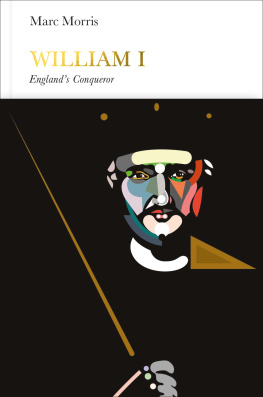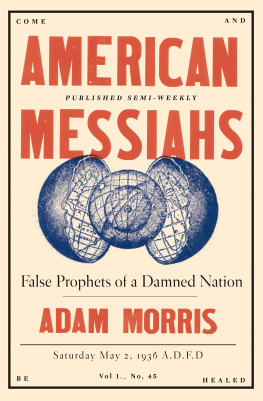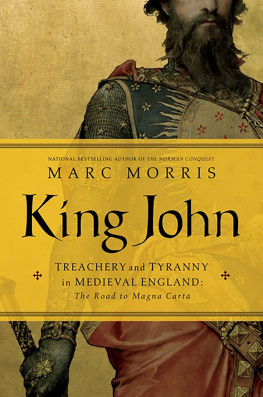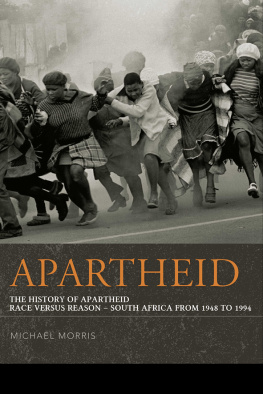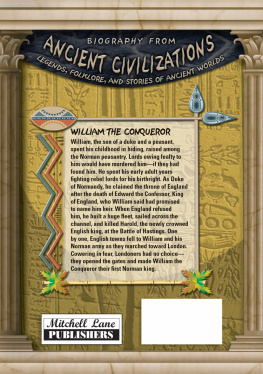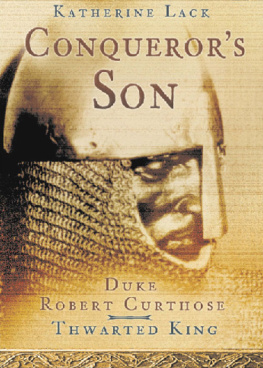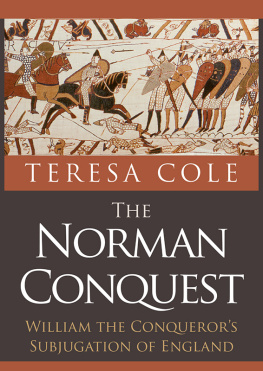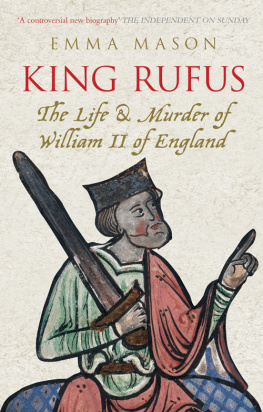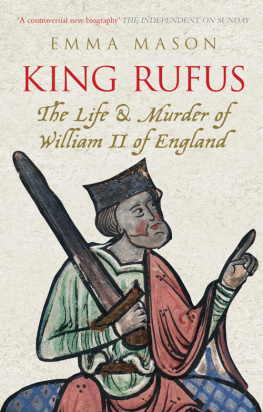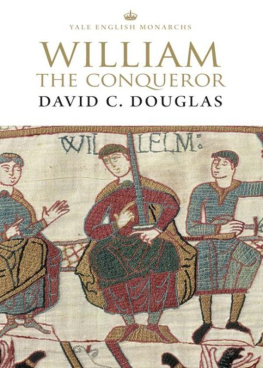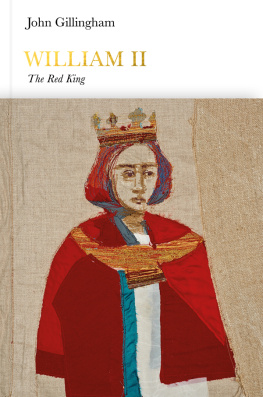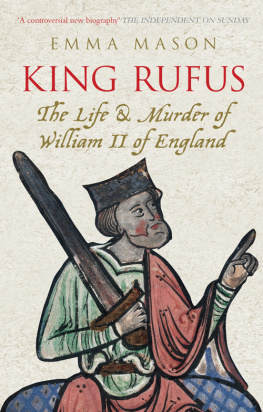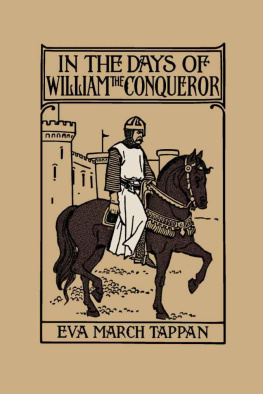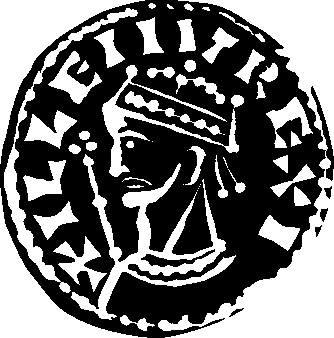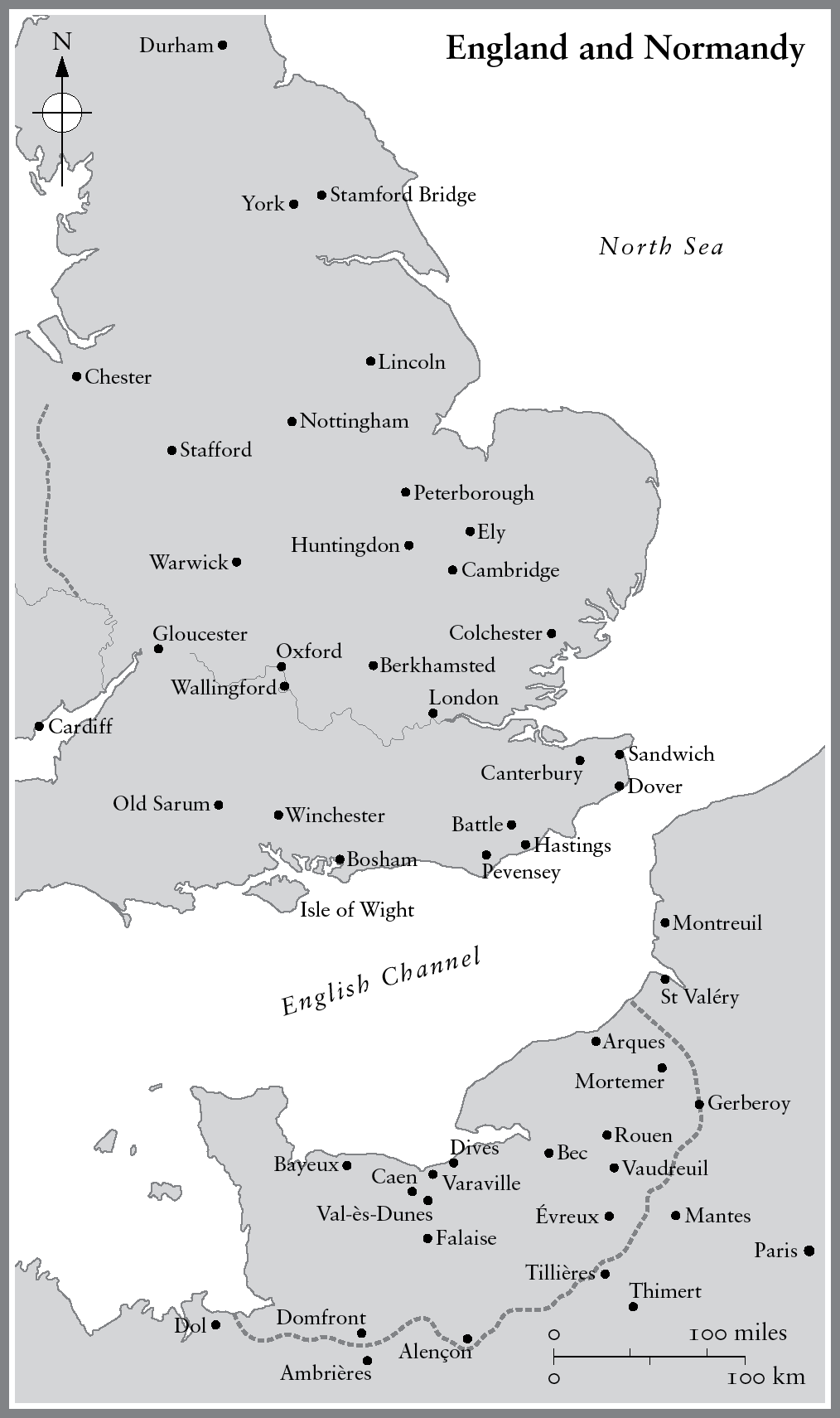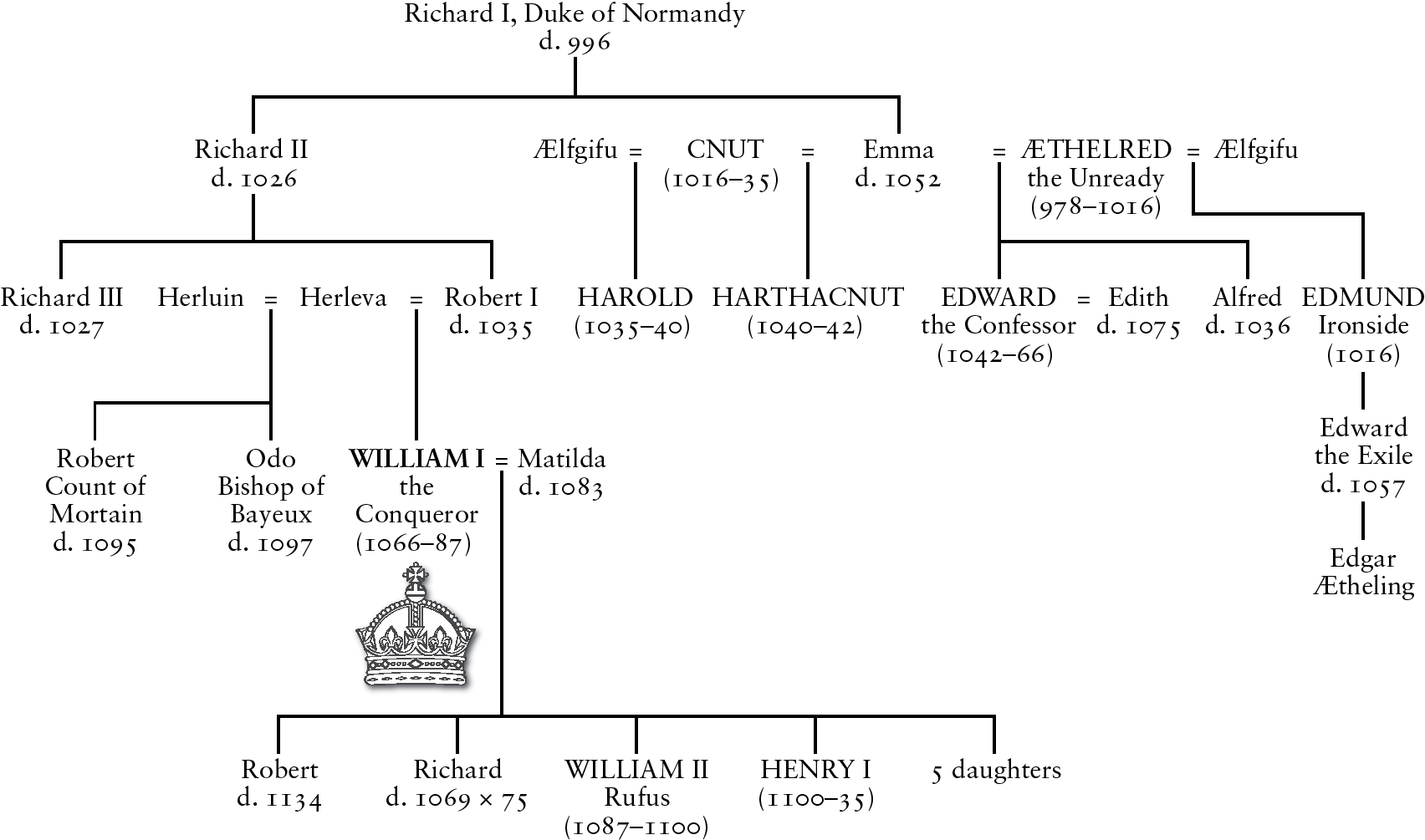Contents
Marc Morris
WILLIAM I
Englands Conqueror
ALLEN LANE
UK | USA | Canada | Ireland | Australia
India | New Zealand | South Africa
Penguin Books is part of the Penguin Random House group of companies whose addresses can be found at global.penguinrandomhouse.com
First published 2016
Copyright Marc Morris, 2016
The moral right of the author has been asserted
Cover design by Pentagram
ISBN: 978-0-141-97785-0
THE BEGINNING
Let the conversation begin
Follow the Penguin Twitter.com@penguinUKbooks
Keep up-to-date with all our stories YouTube.com/penguinbooks
Pin Penguin Books to your Pinterest
Like Penguin Books on Facebook.com/penguinbooks
Listen to Penguin at SoundCloud.com/penguin-books
Find out more about the author and
discover more stories like this at Penguin.co.uk
To John Gillingham
Penguin Monarchs
THE HOUSES OF WESSEX AND DENMARK
| Athelstan | Tom Holland |
| Aethelred the Unready | Richard Abels |
| Cnut | Ryan Lavelle |
| Edward the Confessor | James Campbell |
THE HOUSES OF NORMANDY, BLOIS AND ANJOU
| William I | Marc Morris |
| William II | John Gillingham |
| Henry I | Edmund King |
| Stephen | Carl Watkins |
| Henry II | Richard Barber |
| Richard I | Thomas Asbridge |
| John | Nicholas Vincent |
THE HOUSE OF PLANTAGENET
| Henry III | Stephen Church |
| Edward I | Andy King |
| Edward II | Christopher Given-Wilson |
| Edward III | Jonathan Sumption |
| Richard II | Laura Ashe |
THE HOUSES OF LANCASTER AND YORK
| Henry IV | Catherine Nall |
| Henry V | Anne Curry |
| Henry VI | James Ross |
| Edward IV | A. J. Pollard |
| Edward V | Thomas Penn |
| Richard III | Rosemary Horrox |
THE HOUSE OF TUDOR
| Henry VII | Sean Cunningham |
| Henry VIII | John Guy |
| Edward VI | Stephen Alford |
| Mary I | John Edwards |
| Elizabeth I | Helen Castor |
THE HOUSE OF STUART
| James I | Thomas Cogswell |
| Charles I | Mark Kishlansky |
| [ Cromwell | David Horspool] |
| Charles II | Clare Jackson |
| James II | David Womersley |
| William III & Mary II | Jonathan Keates |
| Anne | Richard Hewlings |
THE HOUSE OF HANOVER
| George I | Tim Blanning |
| George II | Norman Davies |
| George III | Amanda Foreman |
| George IV | Stella Tillyard |
| William IV | Roger Knight |
| Victoria | Jane Ridley |
THE HOUSES OF SAXE-COBURG & GOTHA AND WINDSOR
| Edward VII | Richard Davenport-Hines |
| George V | David Cannadine |
| Edward VIII | Piers Brendon |
| George VI | Philip Ziegler |
| Elizabeth II | Douglas Hurd |
1
Introduction
The monks of Westminster had started the year by burying a king, and now they were ending it by enthroning a new one.
The dead king, Edward the Confessor, had been the monks dearest friend. During his long reign he had transformed the site of their abbey, a small island in the Thames to the west of London, into a seat of royal power, establishing a palace there for himself and rebuilding the ancient monastery, or minster, on a grand scale. The new church was a magnificent affair, the largest in Britain, and built in a strikingly novel Romanesque style. It had been only recently consecrated, and was still not quite finished, at the time of the old kings death on 5 January 1066. The following day the monks had reverentially laid him to rest in front of its high altar.
Now, almost twelve months later, they were preparing for the coronation of William, Duke of Normandy though Englishmen sometimes referred to him by a different name. William was Edwards second cousin and, according to some, his nominated successor. But the dukes claim to the throne had been bitterly contested. The Confessor had been replaced in the first instance by his brother-in-law, Harold Godwineson, the most powerful earl in England and a candidate with strong popular backing. The result had been the most famous succession dispute in English history. After months of anxious waiting and preparation, William had invaded that autumn and fought Harold at the Battle of Hastings, killing his rival and many thousands of others. A few weeks later the surviving English in London had submitted and begged him to take the crown.
And so, on Christmas Day 1066, the Duke of Normandy entered the pristine abbey church at Westminster for his coronation ceremony. He was nearly forty years old, and this was the climactic moment of his life the sacred ritual that would transform him from a duke into a king, and herald the beginning of what he hoped would be a long, glorious and peaceful reign. His English subjects, too, were hopeful that Williams rule would bring peace and security, for in recent months they had experienced little besides death and destruction. Before the crown was placed on his head, the new king swore to govern his kingdom according to the best customs of his predecessors.
But no sooner had this promise been made than the prospect of a better future was shattered. At some point during the proceedings, the audience was asked whether they would accept William as their new ruler, and responded with a shout of acclamation. This was customary behaviour for an English coronation, but the Norman soldiers who had been left outside to guard the church, hearing a clamour of foreign voices from within, assumed that treachery was afoot, and began setting fire to the

